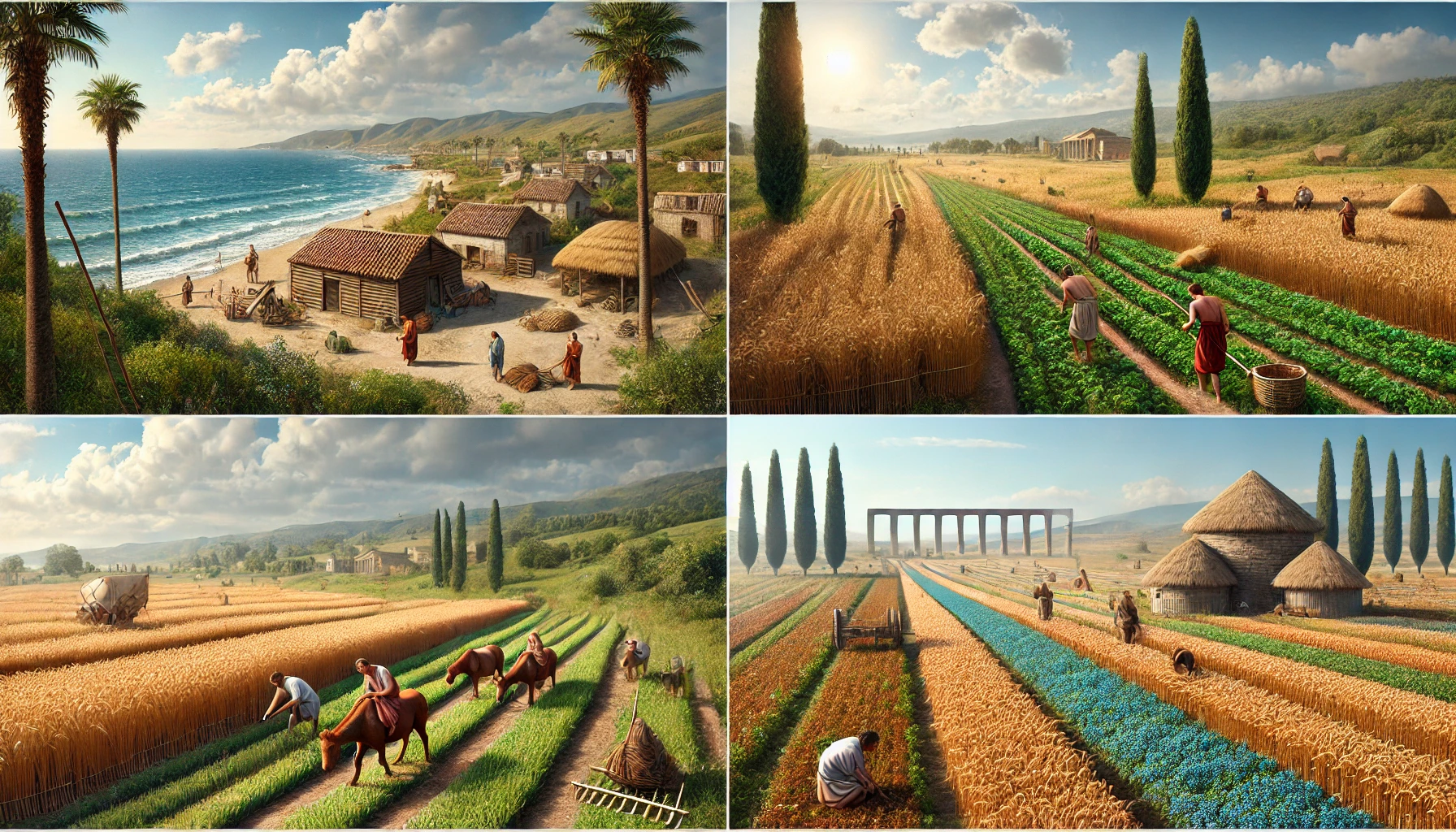Agriculture in Europe has evolved significantly over millennia, shaped by diverse practices and innovations. This article explores the development of European agriculture from its early adoption to the transformative changes of the medieval period.
Early Adoption of Agriculture in Europe
Agriculture emerged in Europe through a blend of migration and diffusion. The earliest agricultural sites are located along the Mediterranean coast, where maritime movement and trade facilitated the introduction of farming practices. Notably, Franchthi Cave in southeastern Greece, inhabited for over 15,000 years, provides evidence of the gradual adoption of agriculture in southern Europe. While some Southwest Asian plants appear in early records at Franchthi Cave, there is no definitive proof of their domestication or cultivation during that period.
Agricultural Practices in the Roman Era (200 BCE to 600 CE)
By Roman times, crop farming and animal domestication were well-established in western Europe. Although yields per acre were modest by modern standards, with nearly half of the annual harvest reserved for seed, Britain still managed to export substantial quantities of grain to Gaul.
Advancements During the Medieval Period (600 to 1600 CE)
The medieval era witnessed significant agricultural advancements, particularly north of the Alps, despite challenges such as population shifts and conflicts. Agriculture had been practiced regularly in regions like Gaul and Britain before and during the Roman epoch.
The Open-Field System
A prevalent agricultural organization during this time was the open-field system. This communal approach involved dividing large fields into strips allocated to individual peasant farmers, who cultivated crops and shared common grazing lands. The system also incorporated crop rotation to maintain soil fertility.
The Three-Field System
An evolution of the open-field system was the three-field system, introduced in the Middle Ages. This method divided land into three parts: one planted in the autumn with crops like wheat or rye; the second planted in the spring with crops such as barley, oats, or legumes; and the third left fallow. This rotation reduced the amount of fallow land and increased productivity.
These developments laid the groundwork for future agricultural innovations, leading to increased productivity and the transformation of European agriculture.
